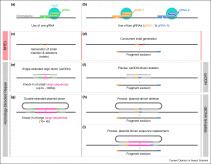The group uses tools outside of the country for this attack campaign, as well as custom malware, including custom malware – including backdoor. Hartip – that Symantec has never used. Compromised computers at the time of the attack included domain controllers and file servers, and there is evidence that files are being filtered by some compromised computers. Attackers frequently used DLL side loading in this campaign and took advantage of the patched Zerologon vulnerability in August 2020.
Symantec first addressed this campaign when suspicious DLL-side loading activity on one the customers networks triggered a warning from Cloud Analytics technology available in Symantec Endpoint Security Complete (SESC).
The campaign is spread across the world, with a large number of regions detected as the victims of the attack. The common link between all the organisations that were attacked were their links to japan or japan based organisations. In the map you can clearly see that there was a reportedly Chinese-government-linked group attacking companies within China’s borders but, like many of the companies targeted in this campaign, the target in that instance is a subsidiary of a Japanese organization.









